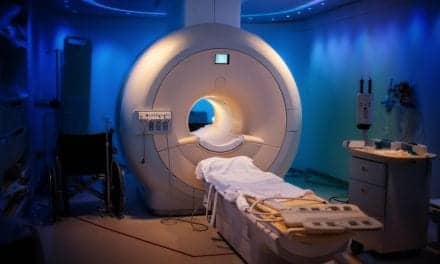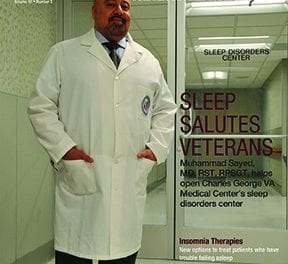Cone beam computed tomography is garnering interest among dental sleep medicine practitioners. Here’s what you need to know about this imaging capability.
Priced at roughly $100,000 on average, cone beam computed tomography (CBCT) machines are a significant investment. But they are remarkable tools for imaging the head and neck. While standard computed tomography (CT) machines produce composite images formed of multiple slices, CBCTs sweep around the area of interest once or twice to produce a three-dimensional image in less time and with less radiation. These scans typically take just seconds and expose patients to a dose of 40 to 135 ?SV,1 but radiation varies widely according to different machine specifications.
CBCT is now commonly used in focuses like oral surgery and implant dentistry. Some dentists also use it as a means of exploring the sinuses, periodontal tissues, and temporomandibular joint. For dental sleep medicine practitioners, there is also interest in using it to assess patient airways. In a small study examining CBCT images in patients with and without obstructive sleep apnea (OSA), the technology picked up differences in airway volumes.2
For some dentists, obtaining a clear view of the airway is a bonus they get from scanning patients for other reasons. Scott Pope, DDS, first bought a CBCT machine to help place implants at his California practice but came to realize the machine’s usefulness for other applications. “I’d say it’s probably the best piece of technology in our practice,” he told Sleep Review. “It provides us with so much information.”
He doesn’t scan specifically for OSA, which is consistent with American Academy of Dental Sleep Medicine (AADSM) guidelines stating that only a board-certified sleep physician can diagnose sleep apnea. But he does keep OSA in mind when looking at scans taken for other reasons. “When I take the image, I’m definitely going to…look at the airway and that may be a conversation that no one’s had with [the patient] before that I can start and hopefully help them receive better care and hopefully better health,” he says. “It’s an excellent tool and just from a diagnostic standpoint, there’s so much that we can see.”
Mayoor Patel, DDS, who mostly sees patients for pain and sleep issues at his Atlanta practice, also uses a CBCT in-house. Before making that investment, he outsourced CBCT to a local mobile scanning company. But that was inconvenient for his patients, who had to make an extra appointment to get their scans taken, and it also took up to two weeks for Patel to see the results. After moving to a larger office, he decided to seize an opportunity to purchase a machine secondhand. It’s an investment he says was worthwhile and recommends it especially strongly for oral surgeons or general dentists who frequently place implants. But he urges caution when it comes to assessing airways.
“What’s going to happen is you find people that look like they have great airways…but when you get them tested [via a sleep study], you determine that truly what looked like a decent sized airway for that individual was not,” he says. The airways of awake, upright patients will have muscle tone that may not be present when they are asleep and horizontal, he went on, and that could lead to false negatives.
The better way to screen, he says, is the old-fashioned way—asking patients about their symptoms and making clinical assessments based on common risk factors. “Using the scan, you might be able to get an understanding of how obstructive the nasal tissues are along with the health of the jaws. That can help make a recommendation for treatment or referral to help support an individual’s needs that may get overlooked, specifically the nasal passages.” But not every patient needs or would benefit from such a scan and dentists should resist what can be a knee-jerk reaction to image patients right away, he says.
“Not always is it necessary to have to radiate someone just to make that decision,” he says.
The topic drew heated discussion on a LinkedIn group, which was summarized by Sleep Disorders Dentistry. Those who opposed using CBCT to treat OSA said the evidence to back this up is lacking; those in favor feel that such evidence is forthcoming and that the scans themselves are invaluable for patient education.3
In an emailed statement to Sleep Review, AADSM said, “Diagnosing a patient with sleep apnea is outside the scope of the practice of dentistry. In addition, there is no sufficient evidence-based literature to support CBCT or 3D airway imaging as predictive of a patient’s risk for OSA or of a patient’s success with oral appliance therapy. Dentists do not need CBCT to custom-fit an oral appliance.”
Other Considerations
So while CBCT machines may be inappropriate for dentists who primarily assess patients for OSA, they could be worth the investment for general dentists who perform a wide range of services.
“When a general practitioner understands what CBCT is, uses it judiciously, and provides more complete diagnostic information and treatment guidance while involving specialists in the treatment process, everyone wins,” writes Bradley Dykstra, DDS, for Dental Economics.4 “The patient receives the most predictable treatment outcome, the specialist has more information than ever before, which improves treatment outcomes, and the general dentist maintains control and orchestrates the complete treatment process.”
There are things to consider besides cost. Some states require practitioners to fill out a certificate of need in order to use a CBCT (although these requirements sometimes fall in the face of lobbying). Practitioners will also have to decide whether to purchase a machine with a large field of view or a small field of view. The former images more of the patient’s anatomy while the latter zeroes in on one location of interest. Since larger scans place more responsibility, and potential issues of liability, on the dentist, some choose to outsource the scan readings to radiologists.
Then there is the question of reimbursement. Educated, persistent practitioners can often, but not always, get insurance reimbursement for CBCT scans. Depending on the condition being assessed, Pope says he’s often more successful getting reimbursed from medical rather than dental insurance. But he says he often doesn’t even bother to bill.
“I wouldn’t look at how many scans you need to take charging $200 a scan. That’s not where your return on investment is going to be. Your return on investment is more—your confidence level is going to go up, your skill level is going to go up, you’re going to start doing more procedures, more implants if that’s your desire or more sleep apnea cases,” he says. “And that’s where it really pays off. It’s something that definitely pays for itself, but I wouldn’t focus on how many scans do I need to take a month to make a payment.”
Rose Rimler is associate editor of Sleep Review.
[sidebar]
CBCT Buyer’s Guide
- Capital Dental Equipment (used): www.capitaldentalequipment.com/used-conebeam-imaging
- iCAT: i-cat.com/dealers
- Gendex: www.gendex.com/locate-dealer
- Kavo: www.kavo.com/us/dealer?ing=US
- Planmeca: planmeca.com/na/how-to-buy
- Renew Digital (certified pre-owned): www.renewdigital.com/cone-beam-3d
- Sirona Dental: sirona.com/en/contact/dealer-search
- Vatech America: www.vatechamerica.com/contact-us-2/us-sales-districts
[/sidebar]
References
-
Mah J. The Genesis and Development of CBCT for Dentistry. Dental Academy of Continuing Education. Available at dentalacademyofce.com/courses/1808/pdf/thegenesisanddevelopment.pdf
-
Buchanan A, Cohen R, Looney S, Kalathingal S, Rossi SD. Cone-beam CT analysis of patients with obstructive sleep apnea compared to normal controls. Imaging Sci Dent. 2016 Mar;46(1):9–16.
-
Klauer D, Sutter R, Rich S, et al. Consensus on Use of CBCT for OSA Appliance Therapy. Sleep Disorders Dentistry. 2016 May 1. Available at sleepdisordersdentistry.com/consensus-articles/2016/5/1/consensus-on-dental-use-of-cbct-for-osa-appliance-therapy.
-
Dykstra B. CBCT: Indispensable in General Practice! Dental Economics. 101(8). No date. Available at www.dentaleconomics.com/articles/print/volume-101/issue-8/features/cbct-indispensable-in-general-practice.html





